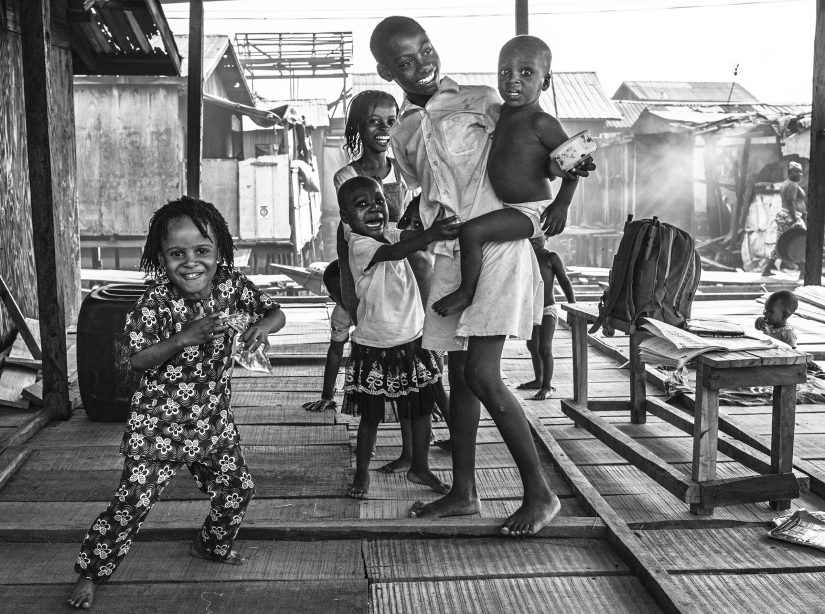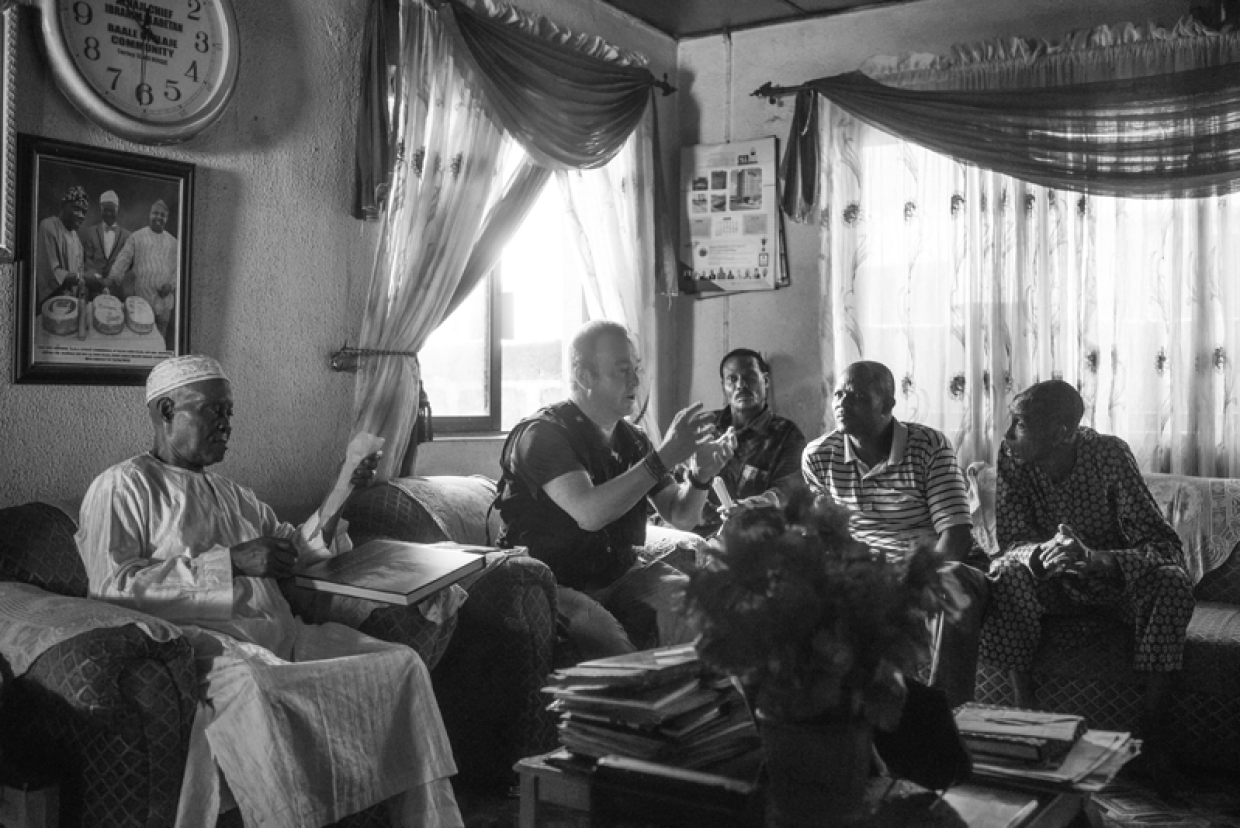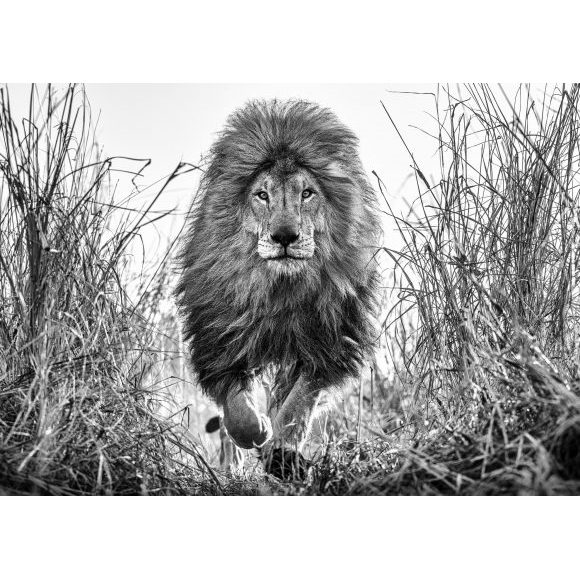Letter From Nigeria

Many will know that I shy away from being classified as a “wildlife photographer” – it seems unnecessarily narrow and airbrushes my roots in sports photography. I accept that my work with wildlife forms the body of my more recognised images, but I merely photograph subject matter that interests me – and very often that just happens to be iconic, emblematic or endangered species. But other times I can be drawn to ghost towns, tribes or indeed “tribal” communities – such as Green Bay or Dortmund or great men such as Arnold Palmer at Augusta.
Elephants are iconic, endangered and magnificent animals – but if photographing them was my sole brief for the next 20 years, I would feel rather de-energised. A great Irish friend of mine has many “life and career” adages up his sleeve, but the one that is rolled out the most is “attack, attack, attack”. And so be it. This is no time for looking back – what I did before is behind me and every new job should be a challenge.
Edward Curtis was a true pioneer and he is integral to the history of American photography. As historic images have risen in value, so too has his own collectability. His portraits of Native Americans, taken between 1900 and 1920 are now celebrated and expensively traded throughout the art world.
Over the last year, two serious collectors of photography have graciously shown me around their estimable museums – one in New Mexico and the other in Missouri.
Both of these extremely successful men beamed with pride when we stopped by their Curtis portfolio. It was clear to me that they regarded these pieces as the highlight of their respective collections. In one museum, sandwiched between two classic Curtis images, was the letter that he famously received from the then President, Theodore Roosevelt, in December 1905. In the two-page note, Roosevelt writes:
“Your photographs stand by themselves both in their wonderful artistic merit and in their value as historical documents.”
I have long been interested in Curtis, simply because he was so influential in building the romanticism which we attach to the early American West. Curtis made beautiful pictures of natives that new immigrants had no experience of and in so doing, he glamourised Indian tribal existence just when it was becoming increasingly marginal.

"What I did before is behind me and every new job should be a challenge."
Ethnologists have criticised Curtis, saying his images are too artistic to accurately portray Indians in this era – the carefully arranged portraits spanked of “Hollywood” rather than the Wild West. He worked in the mountains for sure, but he brought with him the disciplines and styling of a studio.
Curtis died two generations ago, leaving his defence to today’s contemporary photographic critics, but perhaps what he wanted to do with his depictions was to reverse the injustice done to Native Americans by members of his own race. After all, did the world need to see another image of a dead Indian “Savage” in the aftermath of a battle, or reportage work that focused on their seemingly abnormal way of life? Edward Curtis was a romanticist and an artist, not a war photographer. He wanted to make beautiful images, rather than simply document.
This resonates with me as I have no desire to place myself on the beaches of Greek Islands hoping to capture reportage style imagery of desperate refugee landings, nor do I want to cover war or famine. I leave these assignments to braver men than me. No photographers inspire me more than Brits like Tom Stoddart and Don McCullin – but they inspire me to get better and braver at what I do, not to imitate what they do.
When I am working with tribes or other raw and seemingly timeless communities in Africa, I always start with the same approach – respect the subject matter and hope to be respected in turn – the fusion necessarily evolving long before the camera emerges. Photograph with your hosts, don’t photograph at your hosts. This means that I am also a romanticist – I am being reductive and capturing a preconception, more than I am reporting on reality.
This has been true whether I am working with the Himba, the Dinka, the Suri or the Masai. I have tried to immerse myself in each of these communities rather than passively waiting for something memorable to happen by chance. I have no issue with photographers, that impose themselves in these situations. I have great admiration for those who take an idea linearly through from desk led preconception to field work creation – like my friend Jimmy Nelson – indeed, I applaud their creativity.
These musings weighed heavily on my mind as I arrived in Nigeria last month to photograph one of Africa’s most intimidating communities – the stilted slum town of Makoko. It has been described as the Venice of Africa – but with heavy irony – the only bar

that “Harry” would own in Makoko would be a metal one.
Africa is a corrupt continent and arguably no country plays a bigger role in reinforcing this unfortunate reputation than Nigeria – an OPEC member country with a current population of 178 million, but also one with a GDP per capita of just $3000 and an average life expectancy of only 52.
Nigeria is such a complex place – enormously oil rich on the one hand and yet desperately poor on the other. Refined and mannered in some communities, but dangerous and lawless in others. Areas such as the Niger Delta, parts of Port Harcourt and then the North East strong hold of Boko Haram are largely “No Go Zones”. There is a disquiet to the country that is immediately palpable when stepping off the plane. Makoko is not an official “No
Go Zone,” but foreigners are not encouraged to visit and only a handful do. Edward Burtynksy – the celebrated Canadian photographer – recently described the slum as “the hyper crucible of civilisation”. He believed his words enough to only shoot from the air.
My trip was preceded by considerable desk work as it would be unwise to photograph anything in Makoko without local fixers and armed protection. Furthermore, it was made clear that the local Chief’s explicit and full approval would be needed and that this would have to be bought. I am friends with Baba Soyoye through my kid’s schooling, Baba is a street smart and greatly respected Nigerian financier and it was Baba’s Lagos team that first made touch with Chief Aladaton.
The local introduction was key to the project’s success. Without
winning over Chief Aladaton – and it ultimately took $4000 – my safety could not be guaranteed. But when the Chief talks, his word is most authoritative. I saw no police in Makoko – they do not care to go – the reality is that the slum is self-policed by the Chief and his men. The hour long meeting in his modest house on the edge of Makoko one Saturday morning was one of the most surreal meetings in my life (image above). It was a time to remember to show respect and charm.
In 2017, the key to ground breaking and immersive photography is access, not the camera manual (technical fluency is something of “a given”). It certainly took us time to get full access in Makoko, but if access was easy, there would be no shortage of pilgrims with cameras and no shortage of images. It is what I now call “the Yellowstone” factor.














